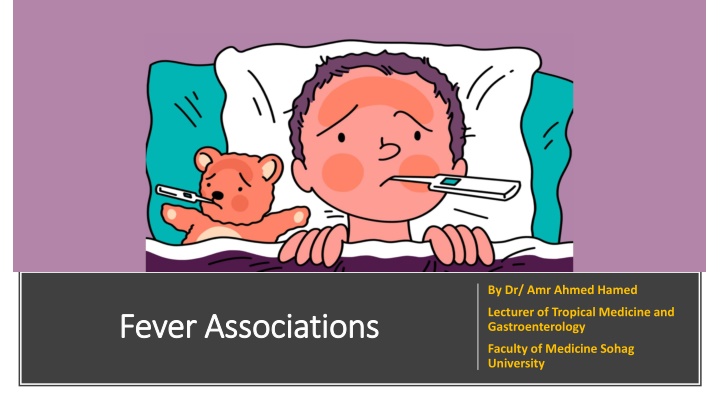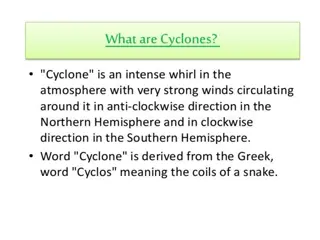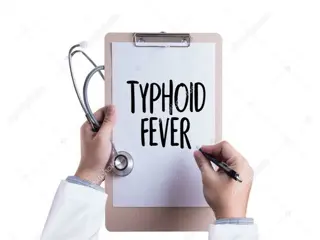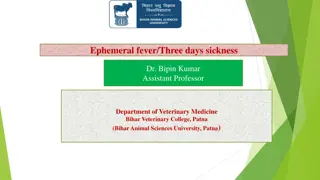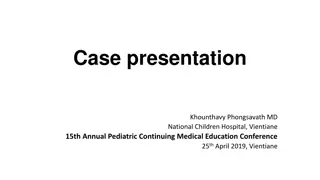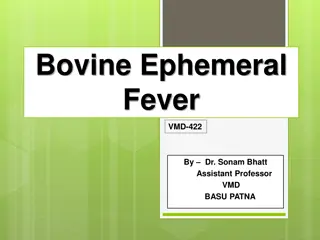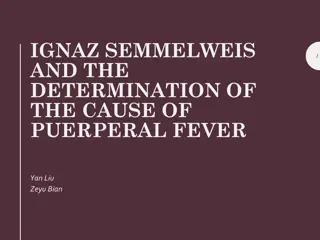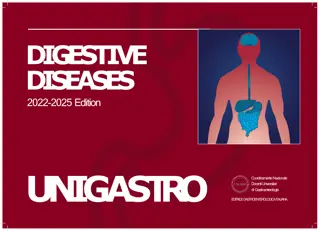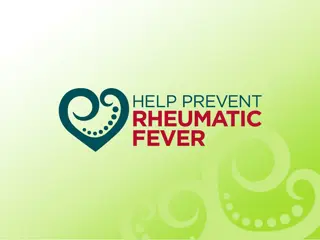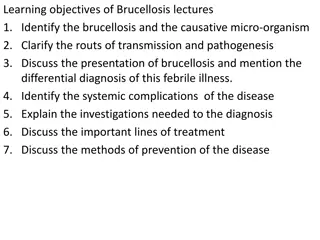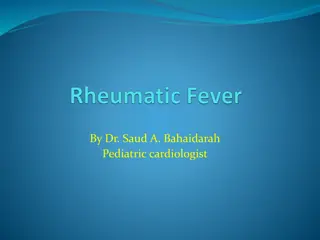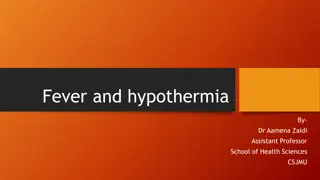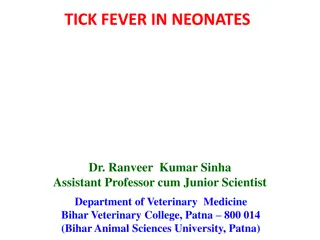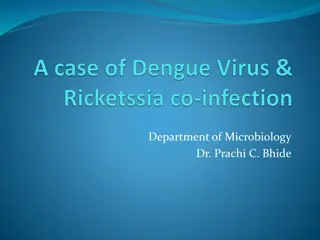Fever Associations and Clinical Presentations in Tropical Medicine and Gastroenterology
This presentation by Dr. Amr Ahmed Hamed, a lecturer at Sohag University, explores various fever associations and clinical presentations related to tropical medicine and gastroenterology. Topics covered include fever with jaundice, sweating, rigors, hepatomegaly, splenomegaly, rash, lymphadenopathy, and relative bradycardia. It discusses infectious and non-infectious causes, along with specific conditions such as brucellosis, tuberculosis, malaria, Hodgkin's lymphoma, and more. The presentation also delves into the significance of rigors in indicating sudden onset of fever, particularly in bacterial infections.
Download Presentation

Please find below an Image/Link to download the presentation.
The content on the website is provided AS IS for your information and personal use only. It may not be sold, licensed, or shared on other websites without obtaining consent from the author.If you encounter any issues during the download, it is possible that the publisher has removed the file from their server.
You are allowed to download the files provided on this website for personal or commercial use, subject to the condition that they are used lawfully. All files are the property of their respective owners.
The content on the website is provided AS IS for your information and personal use only. It may not be sold, licensed, or shared on other websites without obtaining consent from the author.
E N D
Presentation Transcript
By Dr/ Amr Ahmed Hamed Lecturer of Tropical Medicine and Gastroenterology Fever Associations Fever Associations Faculty of Medicine Sohag University
Agenda Agenda Fever with jaundice Fever with sweating Fever with rigors Fever with hepatomegaly Fever with relative bradycardia Fever with splenomegaly Fever with rash Fever with lymphadenopathy
Fever with sweating Fever with sweating A. Infectious causes: Brucellosis may be liters / day . Tuberculosis. Malaria. Toxemia, septicemia, puerperal sepsis, and closed abscesses. B. Non-infectious causes: Hodgkin s lymphoma (Pel-Ebstein fever). Rheumatic fever.
Fever with rigors Fever with rigors Rigors (i.e., bed-shaking chills) indicate sudden onset of fever Rigors often mark the onset of bacterial infection, typically bacteremia, although they may occur in other clinical situations
Fever with rigors Fever with rigors A. infectious causes: 1. Bacterial: Acute pyelonephritis. Lobar pneumonia Meningitis Cholangitis Acute bacterial endocarditis. Pyogenic abscess (rigors are repeated).
Fever with rigors Fever with rigors 2. Viral: COVID-19 Influenza 3. Parasitic: Malaria (rigors are repeated (with release of merozoites from R.B.Cs) Amoebic hepatitis B. Non-infectious causes: Drug-induced fever Transfusion reaction Heat stroke
Fever with relative bradycardia Fever with relative bradycardia Relative bradycardia is defined as pulse temperature dissociation. Every rise in temperature by 1 C is usually accompanied by increased heart rate by 10 beats/minute In some fevers, this relation is not kept, and pulse is relatively slow.
Fever with relative bradycardia Fever with relative bradycardia A. infectious causes: 1. Bacterial: Typhoid fever Leptospirosis 2. Rickettsial: Q-fever 3. Viral: viral hemorrhagic fevers (yellow fever, dengue).
Fever with relative bradycardia Fever with relative bradycardia 4. Parasitic: Malaria Chagas disease B. Non-infectious causes: Lymphoma. Drug induced fever. Factitious fever.
Fever with rash Fever with rash A. Infectious causes: 1. Bacterial: Bacterial Meningitis Scarlet fever Enteric fever (rose spots: uncommon finding( 2. Rickettsial: typhus and rickettsioses
Fever with rash Fever with rash 3. Viral: Viral hemorrhagic fever Acute HIV infection Measles Varicella-zoster virus infection (chickenpox or herpes zoster ) Infectious mononucleosis 4. Parasitic: acute schistosomiasis
Fever with rash Fever with rash B. Non-infectious causes: Blood diseases as purpura Drug induced fever C. Skin diseases: e.g., impetigo, infected eczema, syphilis, etc.
Meningococcal septicemia (glass test) Rose spots (typhoid fever) Scarlet fever rash (sandpaper like skin) Impetigo Heroes zoster rash Chickenpox rash Measles rash
Fever with jaundice Fever with jaundice A. Hepatocellular jaundice: 1. Viral infections: Acute viral hepatitis Yellow fever Infectious mononucleosis 2. Bacterial infections: Leptospirosis Septicemias 3. Parasitic infections: Amoebic hepatitis 4. Liver cirrhosis with liver cell failure
Fever with jaundice Fever with jaundice 2. Cholestatic jaundice: Cholangitis 3. Hemolytic jaundice: Malaria (Black water fever) Sickle cell crisis with infective trigger.
Fever with hepatomegaly Fever with hepatomegaly A. Tender liver: Acute viral hepatitis Amoebic hepatitis Pyogenic liver abscess Leptospirosis (Weil's disease) Liver metastasis
Fever with hepatomegaly Fever with hepatomegaly B. Non-tender liver: Bacterial infections: Tuberculosis, Typhoid fever, brucellosis Viral infections: infectious mononucleosis Parasitic infections: malaria, Kala azar, acute bilharziasis (Katayama fever) Blood diseases: lymphoma, leukemias
Fever with splenomegaly Fever with splenomegaly A. Infectious causes: 1. Bacterial : Typhoid fever Brucellosis Tuberculosis Subacute bacterial endocarditis Septicaemia Splenic abscess
Fever with splenomegaly Fever with splenomegaly 2. Viral: Infectious mononucleosis Cytomegalovirus infection 3. Parasitic: Malaria Toxoplasmosis Kala-azar African trypanosomiasis (Sleeping sickness) Acute stage of American trypanosomiasis.
Fever with splenomegaly Fever with splenomegaly B. Non-infectious causes: 1. Blood diseases: Leukaemia, lymphoma 2. Collagen diseases: Systemic lupus erythematosus(SLE), Still's disease, Felty's syndrome 3. Others : Ulcerative colitis
Fever with lymphadenopathy Fever with lymphadenopathy A. Infectious causes: 1. Bacterial: Tuberculosis (cervical adenitis) Brucellosis Pyogenic lymphadenitis (draining a septic focus) Diphtheria Plague
Fever with lymphadenopathy Fever with lymphadenopathy 2. Viral: Infectious mononucleosis (triad of fever, tonsillar pharyngitis, and lymphadenopathy). Acute HIV (fever, generalized lymphadenopathy, sore throat, rash)
Fever with lymphadenopathy Fever with lymphadenopathy 3. Parasitic: Toxoplasmosis African trypanosomiasis (Winterbottom sign) Acute stage of American trypanosomiasis. Acute bilharziasis (Katayama fever) B.Non-infectious: Blood Diseases: Acute leukemias, chronic lymphcytic leukemia, Hodgkin's disease Cholagen disease: SLE, Still's disease, Felty's syndrome Metastatic malignancies
